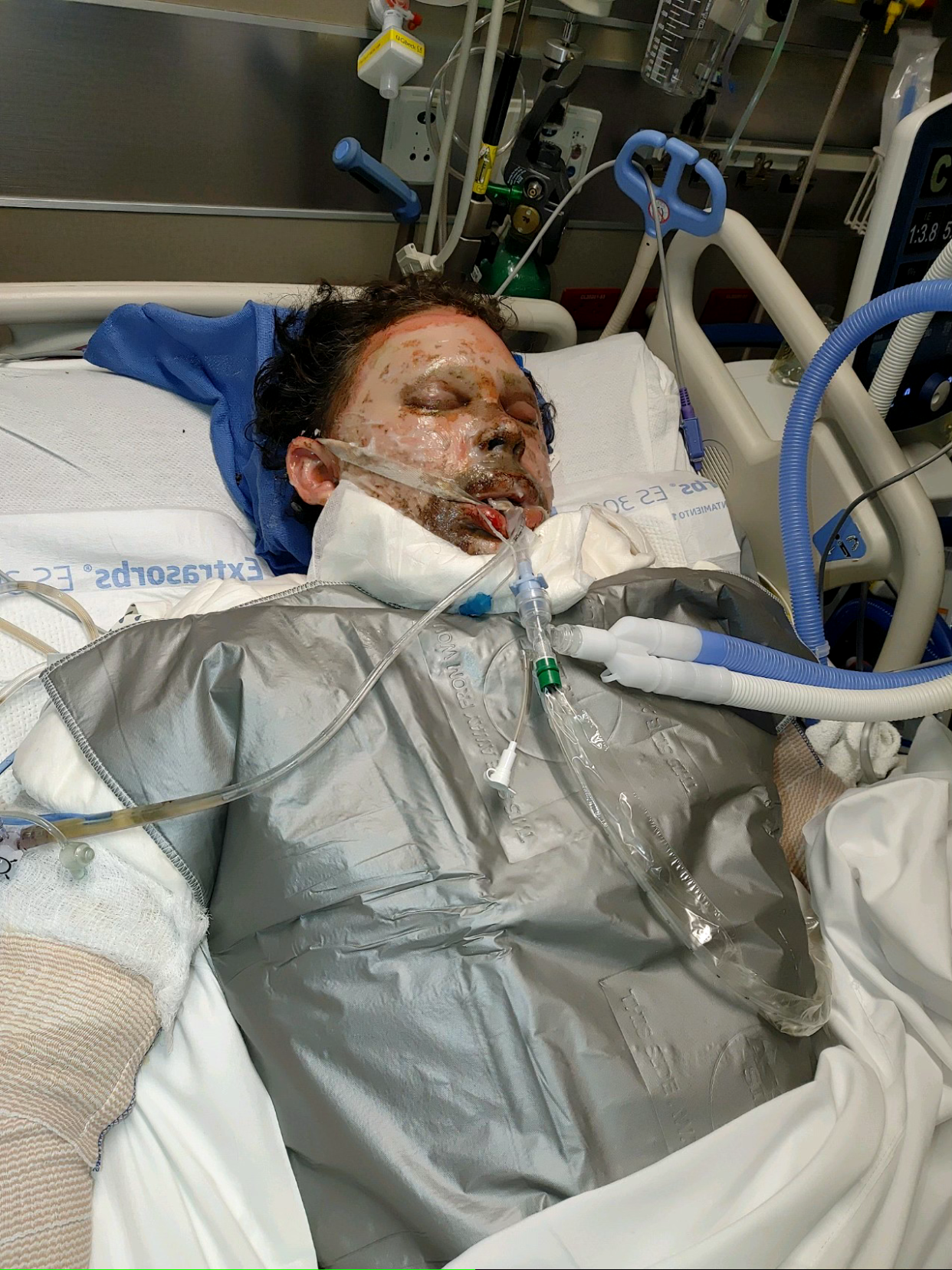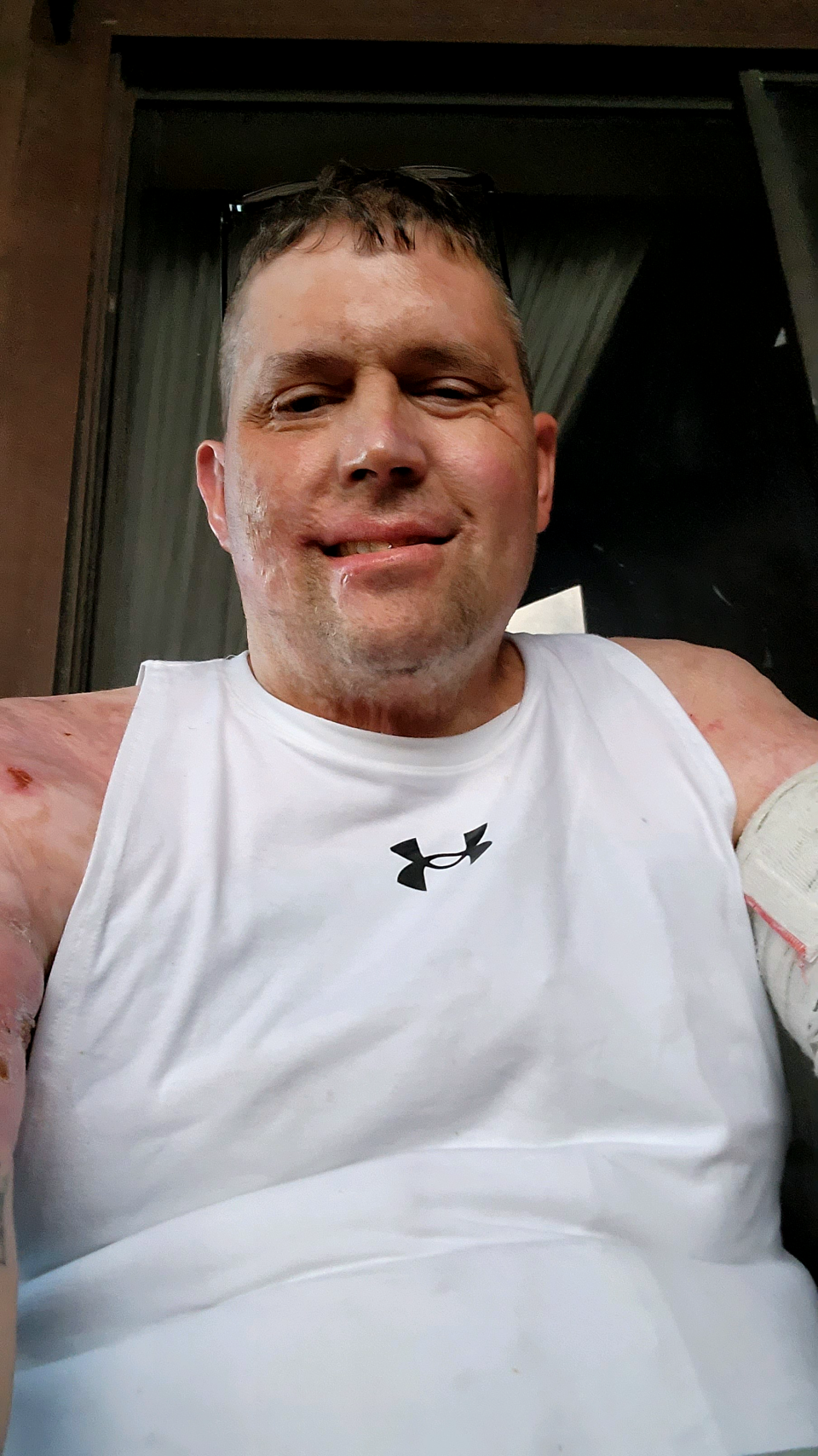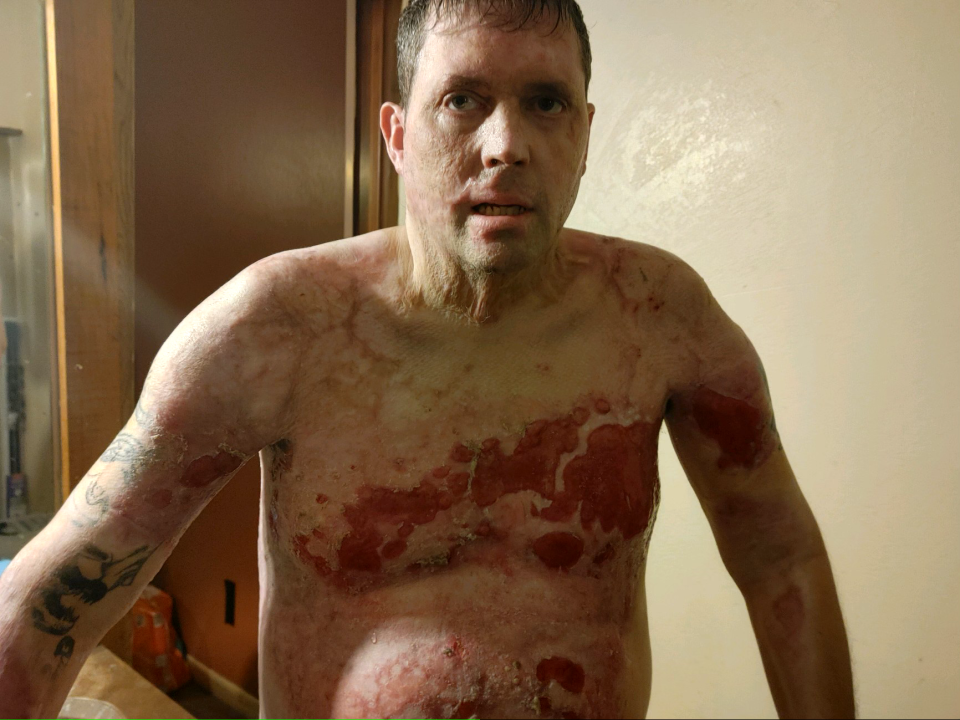'Owe my life to them': How Dell Seton made a burn center happen in Austin

Five years ago, Ascension Seton started a burn center in Austin at what was then Brackenridge Hospital and is now Dell Seton Medical Center at the University of Texas.
The center started as a grassroots effort by Brackenridge surgeons who had expertise from working at other burn centers.
"A city our size should have a burn center," said Dr. Jayson Aydelotte, chief of trauma and burn surgery at Dell Seton Medical Center. "We can't watch 300 people (a year) leave Austin for San Antonio or Dallas."
Typically, a hospital starts a burn center by dedicating a unit or a wing of the hospital and adding staffers to that burn center. Often the hospital even names the center after a benefactor.
"Those hospitals had empty beds" when there weren't enough burn patients to fill the units, Aydelotte said.
Dell Seton, being the area's level one trauma center and the city's safety net hospital, couldn't afford to have empty rooms waiting for burn patients, Aydelotte said.
More: Top Texas House Republican floats mental health-focused response to Uvalde
It integrated the burn program into the rest of the hospital. Burn patients stay in beds in that are in the intensive care units and stepdown units that focus on surgical and trauma care. There is no separated unit just for burns. Because of this arrangement, Dell Seton has been able to find a bed for every burn patient and not had to transfer people to another center because of a full burn unit, he said.
The hospital trained nurses in those existing units to handle burn care. It tapped the specialized people who do wound care to also do burn wound care.
"It's incredibly cost-effective," Aydelotte said. "It enabled us to keep going because it's not scary to the bottom line."
Aydelotte said he and his colleagues also were able to start the center because it didn't require any investment from Ascension, Dell Seton's parent company.
"We didn't ask for money. We just pulled people together and executed a plan," he said.
Dell Seton being the trauma center and the center that treats everyone regardless of ability to pay made it special, Aydelotte said.
"Brackenridge and now our hospital, you have to be a cowgirl or cowboy to work here," he said. "There's a certain amount of innovation and fearlessness to work here, whether you're on the burn service or not."
More: Feeling restless, agitated? Summer heat could be hurting your mental health
Building a burn center in Austin
Before Dell Seton opened its center, all burn patients needing extensive care left Central Texas and typically went to Brooke Army Medical Center's burn unit in San Antonio. For families, that meant either picking up their lives to move to San Antonio while their loved one was getting care or being apart from their loved one.
"You are now close to your support network," Aydelotte said. "It's not just your burn. It's everything."
The center started small. That first year, it worked only with patients who had less than 30% of their body burned. It transferred the more serious cases to Brooke.
Brooke's staff also helped advise the Dell Seton staff on how to start its center. Aydelotte had previously worked there and developed that relationship.
Dell Seton also focused on patient outcomes and more coordination of care across disciplines from wound care to physical therapy and occupational therapy. "We tried to crawl, walk and run with that mission in mind: Patient first. Nothing else mattered to us," he said.
Because of that coordination of care, Dell Seton's burn patients stay fewer nights in its center than average. The rule of thumb is one night for every percentage point of the body burned for burns less than 20% of the body. For burns more than that, it's two days for every percentage point. Patients also return to the hospital less than average, Aydelotte said.
More: United Way awards grants to 68 nonprofits in Travis, Williamson counties
Dell Seton made everyone who worked in burn care part of the team. Burn care has many different tools and supplies that can be used. To decide which ones to stock, each team member gets a vote — from the nurse to the therapist to the scrub tech to the surgeon.
This meant that the team looked at a technique called the Meek method, which was developed more than 50 years ago but fell out of favor, and began using it again. That method uses a specialized machine that allows the team to use a smaller piece of skin for burn patients' grafts. That has helped shorten the stay for patients.
By the second year, the Dell Seton burn center was able to handle all burns of any level and began seeing about 300 cases a year. It continues to be at that level.
The center has the ability to grow with the population because it can take up more or fewer beds as needed. Dell Seton being a teaching hospital and the center being throughout the hospital mean that more health care professionals are getting exposure to burn care.
Growing medical care: As Austin and its surrounding area grows, so does the local need for blood donations
Working with burn victims not easy
"Burns are scary," Aydelotte said. "They scare everybody. People don't want to have anything to do with them because they are scary."
Most burns Dell Seton sees are caused by someone trying to burn something like tree branches. They use gasoline instead of something that is made for starting a fire. What they don't realize is that they are standing in a cloud of gasoline vapor. When they strike a match or a lighter, they light that cloud around them on fire.
When burns are partial thickness (what most people think of as second degree) and full thickness (what we think of as third degree), they are very painful. Even if they are small, it's not something a lot of people can deal with at home, Aydelotte said. Dressings have to be changed regularly.
When it's an extreme burn, one that is full thickness and goes down to the muscle, the skin has to be surgically removed and new skin has to be taken from another part of the body and grafted on the affected area. That means two sites need to heal.
"These operations take hours and hours," Aydelotte said.
Skin grafts are some of the bloodiest operations, Aydelotte said, because there's not a single artery or vein that can be clamped off while the surgeon is working. There are thousands of little holes bleeding everywhere. Burn patients need a lot of blood products to replenish what is lost.
Burns are also very deadly, Aydelotte said. "It's not just skin death," he said.
The rough guideline for mortality following a burn is the percentage of the body burned plus the person's age is the mortality rate. A person who is 65 with 30% of the body burned has about a 95% mortality rate. A person who is 20 with 30% of the body burned has a 50% mortality rate.
And yet, there are times with burns that people defy odds. A person with a predicted mortality of 80% might still walk out of the hospital.
Fire dangers: Safe ways to light fireworks

Seeing results up close at Dell Seton in Austin
One of those who defied the odds was Jason Shields, 50. On June 28, 2021, Shields was going to measure a sign as part of his printing business in Gatesville. He got into the basket of his truck and raised the boom, the arm that holds the basket, to get closer to the sign on top of a building.
The controls malfunctioned and raised the boom quickly, sending Shields in the basket flying into three overhead electrical lines. The jolt of electricity was so strong it burned Shields' shirt off. It popped the two back tires of his truck and knocked the starter of the truck off.
The next thing Shields remembers is a member of the Fire Department in a basket next to him telling him not to move or touch anything while they had the electrical power cut to the power lines. Shields then was put into the firetruck basket and lowered to the ground.
He was in shock and remembers saying to the firefighters about the ambulance that had pulled up, "I think I need to talk to these guys over here."
Shields didn't feel any pain because of the shock, but he was given medication to knock him out while he was taken by helicopter to Dell Seton.
Shields, who had burns covering 28% of his body, was kept in a medically induced coma for about three weeks and had 15 surgeries to remove and replace skin on his chest, part of his back, his arms, his neck and part of his face. He needed muscles in his chest and arms rebuilt.
More: COVID-19 spread worsens to medium level for Travis, Hays counties. Here's what that means
He lost the pinkie finger on his right hand, part of his right earlobe and all of the fillings in his teeth.
His dressings needed to be changed regularly, and he would be knocked out when that needed to happen because of the pain.
Every time there was a chance to do physical therapy in the hospital, he did it, even if he didn't want to. He thought he could just walk out of there, but the first time he tried to walk, his knees buckled. He had to get his strength back up.
He was in the hospital for 65 days, but he did walk out of there. "I totally owe my life to them," he said.
Almost a year later, all but 8% of his skin grafts have closed. He no longer has any bandages on his arms or neck, but some remain on his chest.
"They told me it would take at least a year until I was feeling back to myself," Shields said, "and then another year of recovery."
Shields, a retired Army sergeant first class with three deployments to Iraq and three years as a drill sergeant at Fort Hood, said it has been frustrating not to be able to do everything he could do before, but he is able to do more with each passing month.
Shields will need a few more surgeries to deal with contractures — skin that has thickened and restricts movement.
"I'm excited to close up the wounds and get on with my life and do something good," Shields said. "I'm super grateful to be alive. I can't express in words how grateful I am about everything they did to keep me alive and keep going. ... I'll be running soon."
Growing programs: Gift of a kidney launches new Austin transplant program

Austin as a center for burn development
The first five years of Dell Seton's burn center have been about just making it happen. "We all just pulled up our bootstraps to do this together," Aydelotte said.
Now the center can think about areas for growth and adding innovations in how to care for burns.
As Austin grows, so will the center in the number of people it trains and the number of beds it will regularly use.
It will also start doing research. "That's our mission in the next year or so," Aydelotte said.
During the pandemic, he and Dr. Steven Wolf, from the UT Medical Branch in Galveston, started a collaboration of all the burn centers in Texas. They try to meet monthly by video conference to discuss cases and innovations.
Aydelotte intends to bring this collaborative to Austin to meet in person in the next year.
"We'll house it and bring smart minds together to learn from one another," he said.
This article originally appeared on Austin American-Statesman: Austin burn center wouldn't exist without Dell Seton Medical Center

